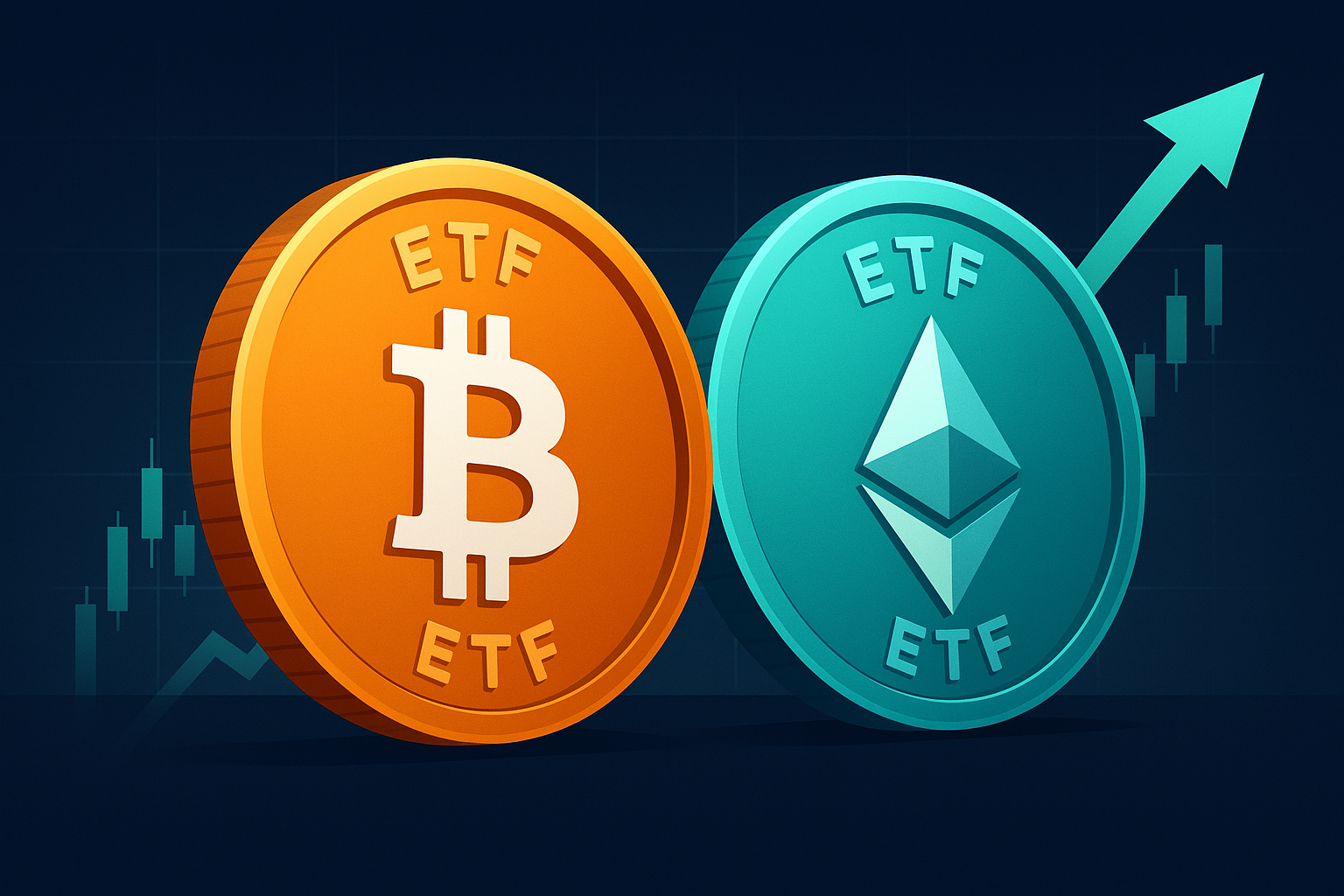U.S. spot Bitcoin and Ether ETFs produced a record week of activity in mid August 2025, reaching an impressive combined trading volume of around $40 billion. The surge was, in large part, driven by a sudden lift in Ether ETF activity, which accounted for roughly $17 billion. The sheer volume of inflows reveals just how popular crypto-backed ETFs are becoming, and indicates a shift in mindset among investors. From niche instruments to primary vehicles… portfolios across the U.S. are increasingly treating Bitcoin and Ether ETFs as mainstream tools. The sudden flurry of activity also caused sharp price moves in the crypto market, as Bitcoin rose to around $124K, and Ether to around $4,787, before pulling back.
In this article, we take a look at the history of these two ETFs, the significance of this activity for Ether ETFs in particular, and what it suggests for the future of crypto investment.
The short history of U.S. spot Bitcoin and Ether ETFs
The short history of U.S. spot Bitcoin and Ether ETFs is a story of gradual regulatory skepticism, which eventually led to what we’ve seen this month: a $40 billion trading volume milestone. For years, U.S. regulators resisted spot-product approvals, leaving investors seeking regulated exposure to instead place their capital into futures-based ETFs, trusts and offshore products. The first to receive approval was the spot Bitcoin ETF in January 2024. The SEC approved 11 spot Bitcoin ETFs which began trading soon after, effectively opening a regulated, exchange-listed channel for direct BTC exposure. The launch triggered a rush of capital into the new products, reaching billions of dollars in the opening days, swiftly normalizing Bitcoin as a portfolio feature for both institutional and retail investors.
Ether’s entry into the ETF market followed a similar path, but received a far more measured reception. The spot Ether ETFs were approved by the SEC in May 2024, after which the first funds began trading in late July 2024. But unlike the days following the Bitcoin approval, attention didn’t arrive overnight. Months of institutional ground work and technical fixes gradually removed many of the practical barriers to adoption. Ether ETF products became easier to trade and easier for allocators to justify within regulated portfolios. Several factors converged in recent weeks, including a few headline purchases of Ether ETF shares and momentum-driven allocations, to produce roughly $17 billion of spot Ether ETF trading volume in recent weeks.
Ether ETFs “wake up”
One of the first to react to the Ether ETFs performance in recent weeks was ETF analyst Eric Balchunas, stating in a post on X: “Ether ETFs’ weekly volume was about $17b, blowing away record, man did it wake up in July”. The ETFs also recorded more than $3 billion in net inflows, which marked their second-strongest monthly performance since their launch last year. This surge also saw Ether come close to its previous all time high of $4,878 on the same day, reaching $4,784, according to CoinMarketCap. Just as BTC rallied following major inflows after their January 2024 ETF approval, Ether is now seeing more on-chain activity following its ETF activity. It seems investors are making up for lost time.
What does this mean for the future of crypto investment?
The record week for Bitcoin and Ether ETFs has wider implications for crypto beyond the headline volumes. It strengthens the argument that regulated, exchange-traded vehicles can serve as an on-ramp to the broader crypto market. As investors and portfolio managers grow more confident in allocating funds to ETF-listed crypto exposures, particularly given the strong performance of recent weeks, they are likely to entertain regulated exposure to other token-based ETFs or even the crypto market itself. That curiosity has already translated into a wave of filings and formal proposals for spot altcoin ETFs, from Cardano and Solana to XRP and others.
Managers such as Grayscale and others continue to file registration statements for spot-altcoin products. However, the SEC has had to request more time for review and extend decision deadlines for products such as Solana and Ripple ETFs, whose proposals were recently pushed back to October 2025. But the market is moving in the right direction: toward a broader ETF ecosystem. Each successful launch is likely to lower the perceived regulatory and operational barriers for the next. As for the crypto market, ETF approvals have typically shown to spur greater on-chain activity, often lifting prices, making them a positive step forward for both traditional and crypto investors.
For more insights and reflections on crypto trends, trading, how to use Limitlex, or to open a trading account with us, visit www.limitlex.com.



